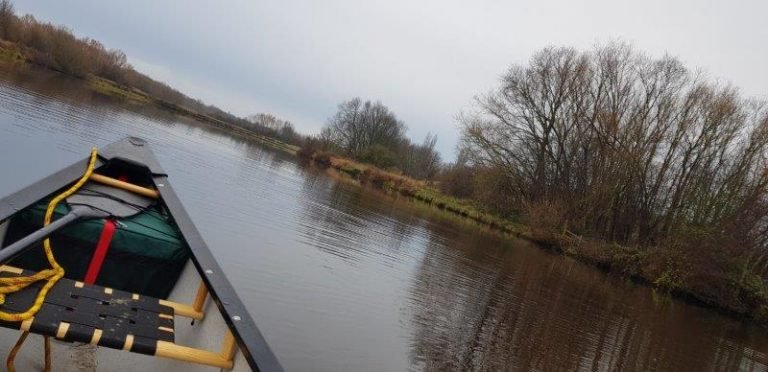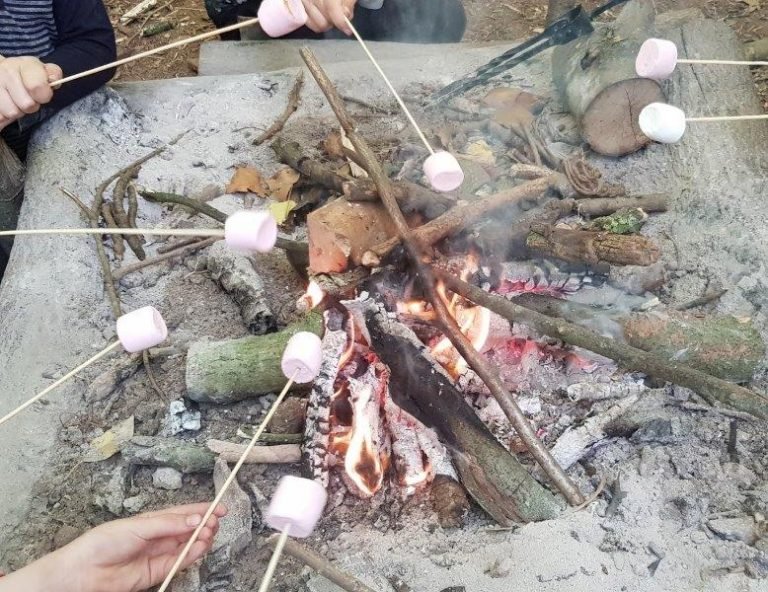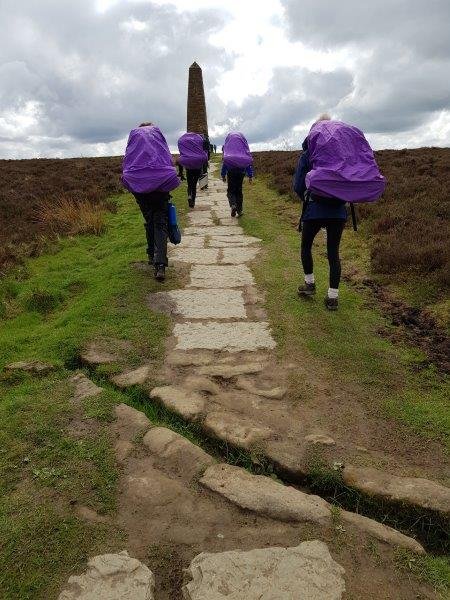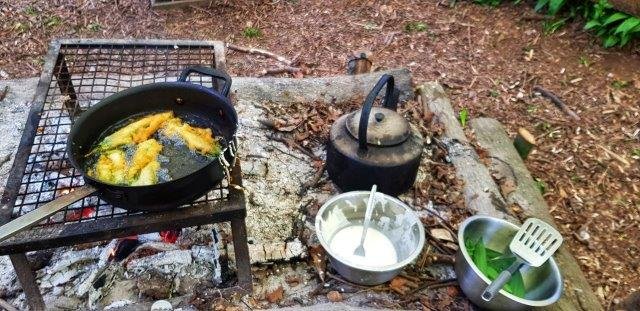Campfire Cree Bannock
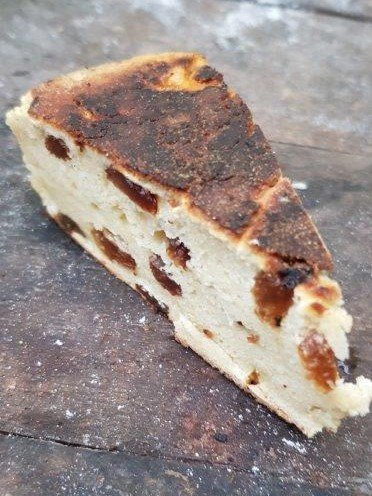
During last week’s Home Educators’ Forest School session we made a couple of bannocks; bannock sounds as if it has a Scottish heritage- indeed, a quick piece of research suggests that the word itself has a translation of morsel in Gaelic. Without the time for detailed research I’ll leave it at that…
Safe to say, bannock is something I was first introduced to years ago (dare I saw almost 20, when I was studying outdoor education…). Later, when expeditioning, when we arrived at new camp, we would take it in turns to light the fire, cook the bannock and get the kettle on whilst everyone else was setting up the tents- then we could sit down for a snack to tide us over until our evening meal. Bannock is something that has featured on courses I’ve done as an instructor, and certainly something that has to feature in my practice!
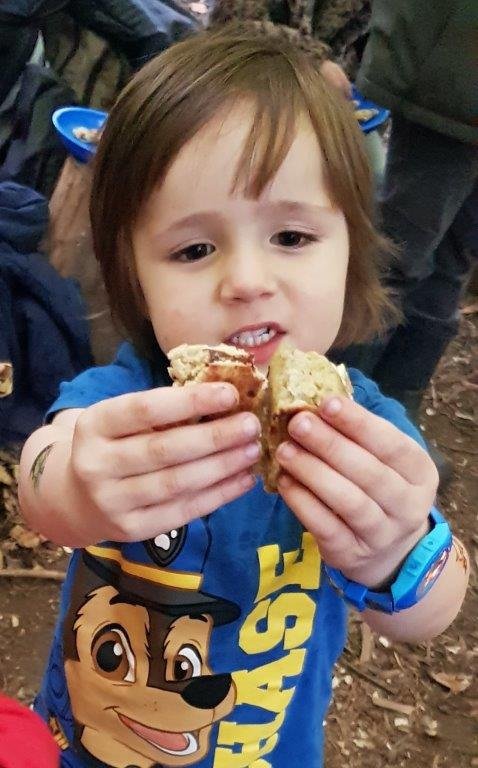
It’s a form of campfire unleavened bread, or cake if you make it sweet! It is hearty, filling, stodgy, quite easy to make and pretty tasty. I’ve made it as a snack, as a dunkable accompaniment to a stew and as a dessert. It doesn’t take much time to prepare, is simple to cook in a pan- but does take a steady heat and about half an hour to cook (less if you make smaller cakes…). One of the things I really like is that all of the ingredients are light weight- so they can be easily carried, it’s easy to make and tasty!
So, this recipe is fro Cree Bannock, a sweet bannock. It uses the internationally available measuring implement- the hand! It also requires you to know the difference between a hand full and a good hand full; as well as a palm full, a good palm full and possibly a pinch…
So, the ingredients you’ll need are:
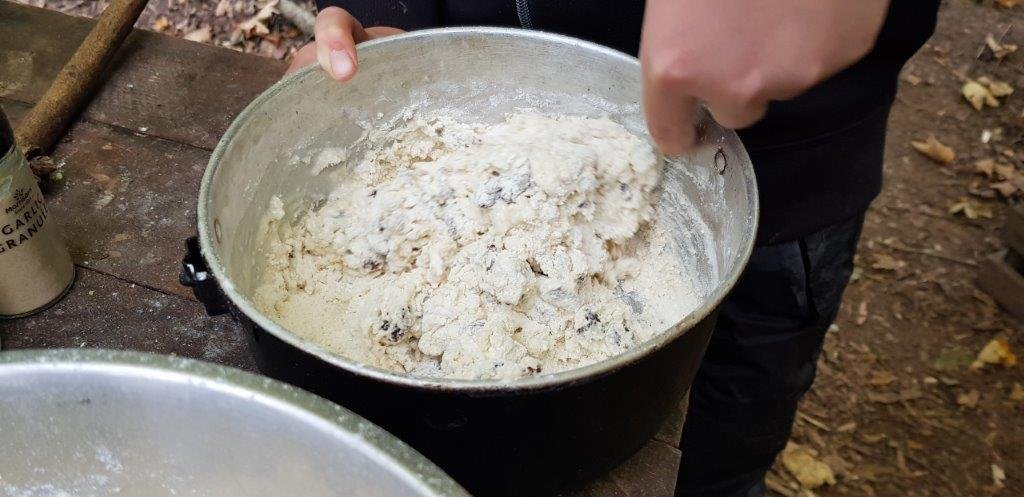
- 4 good hand fulls plain flour
- 2 good hand fulls milk powder
- 1 good palm full of sugar
- 1 palm full of baking powder
- 1 good handful dried fruit (raisins are my favourite)
- About a cup of water
As you’ve probably realised, these measurements are quite approximate- that’s because there’s not many utensils in the wild… Make sure you’ve got some extra flour to put in in case you need to dry the mixture out a bit.
Method:
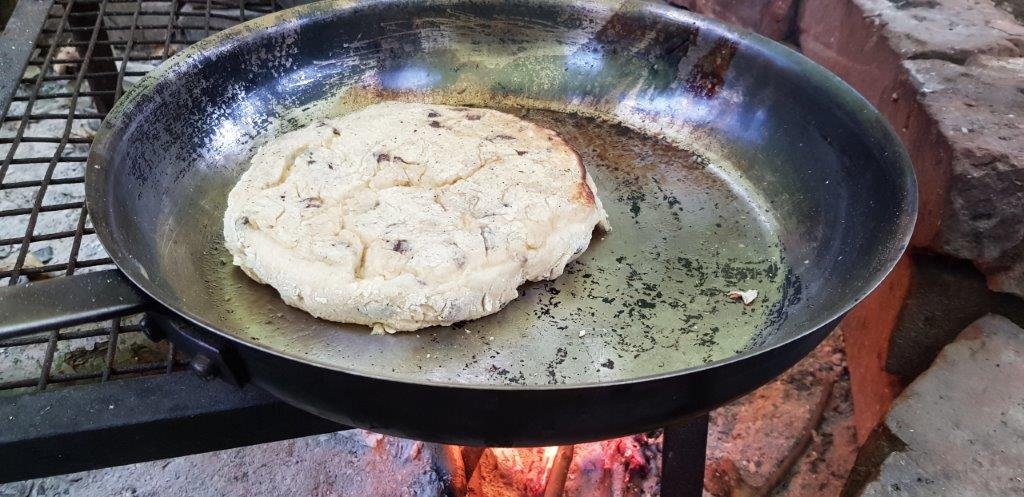
- Heat a pan on the fire, a heavy frying pan is best
- Mix all the dry ingredients in a bowl or pan
- Gradually add the water, stirring and mixing- a metal spoon is best (it’s easier to clean up)
- The mixture will form a dough, it will be softer and looser than bread dough, but should be dry on the outside
- The dough will usually end up in a ball, just flatten it out a little so that it’s about 2 inches thick
- Place the dough in the pan, turn it every 5 minutes or so. It’ll take about 30 minutes to cook- give it a tap and it should sound hollow- then it’s ready to chop up and share…
The bannock is quite a hefty thing to eat- it is quite stodgy! It’s best eaten warm!
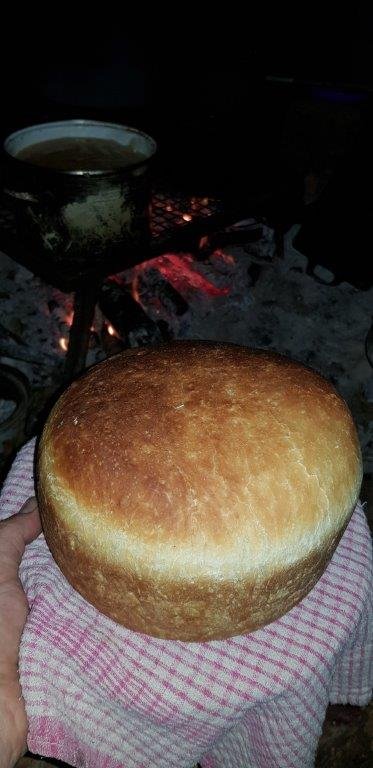
Initially I was planning on doing one post with a variety of ways to do bread on the campfire, including an exploration of how bread has featured in adventures and life- but when I considered all the ways of making bread- it would be an epic blog post! So, there will be future posts looking at different ways of making bread, including flatbreads and the classic Dutch oven loaf!


